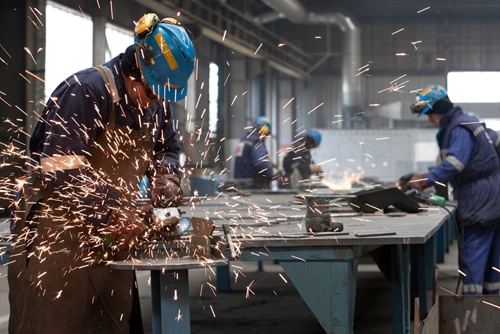
The U.S. Chemical Safety and Hazard Investigation Board called for stricter regulations for combustible dust again this year after a factory fire injured seven workers in 2012.
Combustible dust is often a hidden fire hazard for industrial workplaces as any combustible material that is in a finely divided form could burn quickly in the right conditions. These materials include agricultural products, chemicals, metals and plastics.
Between 1980 and 2005, there were 281 combustible dust-related events that contributed to 119 worker fatalities and 718 injuries, according to data from the CSB.
The employer in the incident mentioned by CSB did not properly control combustible dust in the facility, resulting in a fire at a factory.
"Although OSHA's investigation of this accident deemed it a combustible dust explosion, it did not issue any dust-related citations, doubtless hampered by the fact that there is no comprehensive combustible dust regulatory standard," CSB Chairperson Rafael Moure-Eraso said in a statement.
"Companies could reevaluate their safety programs regarding combustible dust to lower the chance of explosions and fires."
Now the CSB is calling for the U.S. Occupational Safety and Health Administration to establish a standard that is in compliance with National Fire Protection Association codes to contain combustible dust. The CSB also suggested having OSHA include more industries under its current National Emphasis Program to reduce dust hazards.
With CSB renewing its call for establishing a standard for this safety hazard, companies could reevaluate their safety programs regarding combustible dust to lower the chance of explosions and fires.
When Combustible Dust Fires Occur
Employees who are unsure about the signs of safety hazards like combustible dust could be unaware that they are at risk for injury or fatality should an accident occur. Recognizing the signs of a potential combustible dust fire could prevent incidents that might harm employees and the surrounding facility. According to OSHA, combustible dust poses fire and explosion risks if the following conditions exist:
1. Combustible dust is present
2. There is an ignition source for the dust
3. Oxygen is in the air
4. The dust is in a high enough concentration
5. The dust cloud is contained
Since the CSB recommended companies perform a hazard analysis to adhere to the codes of the NFPA, employers should implement proper dust control measures that address these five conditions, which includes making sure dust containment equipment is well-maintained.
Install Dust Control Systems
In addition to monitoring the conditions that could support a dust-related fire or explosion, companies also need to put into place systems to contain and reduce the concentration of dust.
After implementing these dust control systems, employers should ensure proper maintenance of equipment, such as dust collection systems, which are crucial to maintain a safe environment for workers. The CSB noted the company that experienced a flash fire that burned seven workers in 2012 did not test its dust collection systems.
Further, companies should reevaluate their ventilation system design, which could help lower the concentration of dust in the air, lessening the risk it comes into contact with a ignition source.
By looking into their tools for reducing combustible dust and communicating the warning signs of potential dust fires, companies can curb workplace injuries and fatalities to increase employee productivity and protect their bottom line.








